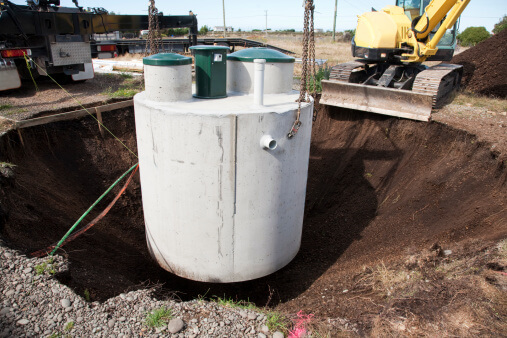
How to Ensure a Smooth Septic Tank Installation
Whenever it’s time to add any new system to your property, it’s natural to want things to go as smoothly as possible, as delays have a way of increasing stress and skyrocketing costs. This is no different with septic tank installation. Reviewing these basic steps will give you a starting place for your project.
Discuss the Layout
If you already have a septic system in place, this may be a simple discussion of whether to remove your old septic tank so that you can put a new one in its place, or to abandon the current septic tank and place a new one beside it. When you need to install an entirely new septic system, there are more considerations. While the majority of homeowners use a gravity system, where all the pipes head downhill, there are alternative systems available that utilize a pump to move effluent from the septic tank to the leach field.
This is also the time to decide on the best place for the leach field on your property. When using a gravity system, it may be necessary to place this septic system element on the lowest elevation of the property away from your house.
Obtain the Permits
Depending on where you live, there may be a number a permits you’ll need to obtain before you can start work. There will also likely be an inspection from the local health department after the septic tank is in place to ensure that it meets all local guidelines and codes. While it’s likely that your contractor will take care of this for you, be sure check with them in advance. Nothing can slow down septic tank installation like each party assuming the other will obtain permits and then learning on installation day that no one got them.
Choose Your Septic Tank
While one or two people in a household can often get away with the smallest septic tank available, this may not be suitable for subsequent owners of your property. In order to keep your septic system from being the reason future buyers don’t consider your property, it’s often best to use the number of bedrooms in the home as a guideline for the septic tank size, as this is usually the best indicator of the maximum occupancy of a home. Again, your contractor can walk you through all the details of the calculations, but you can start estimating the minimum of what you’ll need based on 50 gallons per person per day, assuming two people for each bedroom.
Evaluate the Landscaping
If your property is full of trees, shrubs and other foliage, it may be necessary to remove or relocate some of these plants away from where you’ll install the septic system. In addition to removing the trees from the area where the leach field and septic tank will be installed, you may also need to deal with any plants near the proposed site, as extensive root systems have a way of blocking drain pipes and destroying leach fields. If you’re unsure about whether a particular tree is too close to the site of the septic tank installation, your contractor should be able to provide guidance on the matter prior to starting to the work.